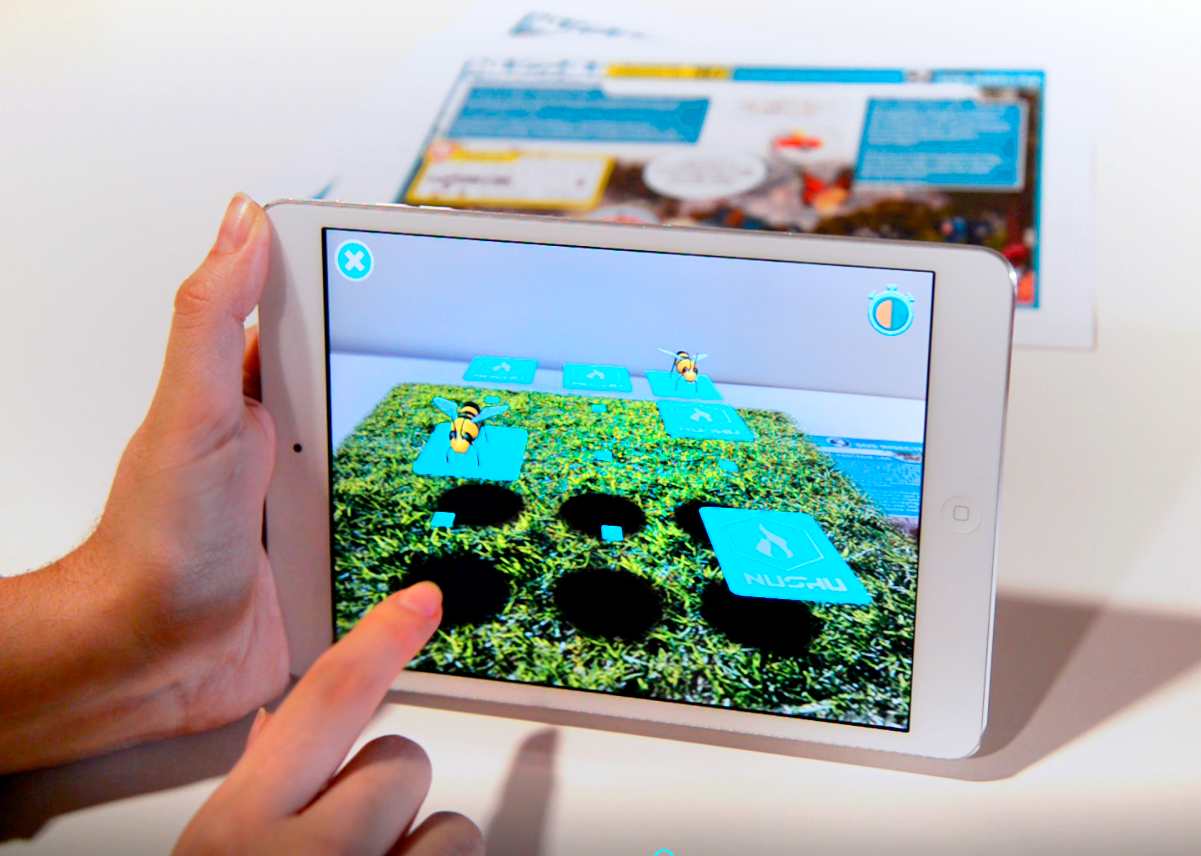How a Spanish news company is using augmented reality to engage elementary school students
From Snapchat to Pokémon Go to magazine covers, augmented reality (AR) technology is helping people explore the world around them, often using devices they already have. NUSHU, a Barcelona-based AR news service, hopes to use this technology to engage elementary school students with current events.
We spoke to founder Eva Domínguez about how NUSHU works and its place in the classroom.
How did this idea to develop an AR school news service get started?
The seed for NUSHU was planted over twenty years ago when I was given the opportunity to work for a new monthly magazine for children as a young reporter at El Periódico de Catalunya. Journalism for young readers is a great journalistic challenge, reporting has to be extremely informative and entertaining, not taking anything for granted, not defeating their innate curiosity and, furthermore, turning reality into an exciting adventure to discover. Reporting for children certainly made me a better journalist and a passion for Journalism for children was born.
I left the newspaper to get a Master’s degree at New York University, in the Interactive Telecommunications Program, with a focus on new technologies. The possibilities that interactive and digital communication can bring to journalism have been my drive since the Internet came to change our lives. I created a prototype news project for kids for my thesis project at NYU. However, when I came back to Barcelona after the program, the idea seemed too advanced for that moment in time. In 2013 I decided it was the right moment.
When thinking about how to update the concept, it was clear to me that it had to be ‘transmedia’ and combine both traditional platforms and immersive ones to create a great storytelling experience for children. At the same time, I put a lot of thought into the process and methodology for the story to be serialized very quickly. The goal was to create a new ‘mission’, this is how we call each installment, in 5 days. We have done for 4 months in a row, so we achieved this goal of serializing AR experiences for news.
Credit: NUSHU.
How does NUSHU work?
Each NUSHU mission or instalment comprises two comic pages and interactive contents that are activated with the NUSHU AR EDU augmented-reality application. Students can use it to talk to the 3D NUSHU they see in front of them, and also to learn using the games related to the main subject. In addition, each mission comes with a guide for teachers with suggested activities to develop in the classroom. It is available in three languages: English, Spanish, and Catalan.
What’s the process like, from choosing a news story to creating content around it?
Each installment addresses an issue of global impact on four main areas: Science and technology, society, homo sapiens and planet. We put the effort on giving context to main global issues. To make an analogy in the journalism world, we would be more a magazine that a breaking news outlet. We believe we live in a global world where what happens in one part of the planet also affects the rest. NUSHU is an international project that covers topics from this perspective. NUSHU’s mission is to understand what is happening in our world and, therefore, it travels from one place to another while investigating issues of broad interest.
Credit: NUSHU.
How do kids interact with different stories?
There are two main interactions with the AR: a dialogue with NUSHU in 3D about its findings for its mission and a game related to the topic. Besides that, our intention is to extend the interaction through social networks. NUSHU asks children for help for its research and the guides for teachers is aiming to suggest activities on searching for information, developing critical thinking and disseminating the results. When schools share the results online, NUSHU answers back on social media.
What do you see as NUSHU’s role in the classroom? Is it meant to replace a part of traditional curriculum?
We think NUSHU can be a great tool for teachers aiming to link the innate curiosity that children have on what happens in the world to the curriculum. We provide this option with the guides by suggesting different activities. NUSHU can be used to increase Media Literacy skills, which is an increasing concern around Europe, but also as a new way to go over curricular subjects. For innovative schools looking for more transversal solutions in the school curriculum, NUSHU can be a great solution.
NUSHU’s quality has been certified according standards of Finland educational methodology, which is one of the most innovative ones.
Credit: NUSHU.
Where is NUSHU in use currently?
We are just disseminating the service among schools. We are starting in Catalonia, where we can do live demos to schools and at the same time we are looking for distributors around Europe and in the US interested in bringing NUSHU to schools and libraries.
Some innovative schools have adopted NUSHU very quickly and with great enthusiasm in Catalonia.
There’s been some news lately about the negative effects of technology on kids. Though NUSHU is for classrooms, it still revolves around giving kids more screen-time. What are your thoughts on balancing the educational benefits and negative effects of technology?
I understand the concerns and share them, of course. I think that screens and technology are a part of our technological society and the question is how we foster the positive aspects and minimize the negative effects. We all have our share of responsibility in this sense. Our way to cope with it is by creating such an educational and engaging experience for students that we can somehow occupy the time they spend with screens bringing more quality content to it.





